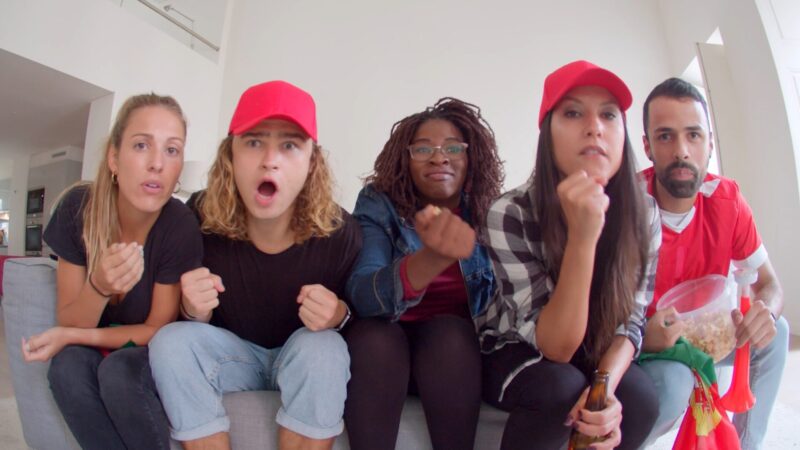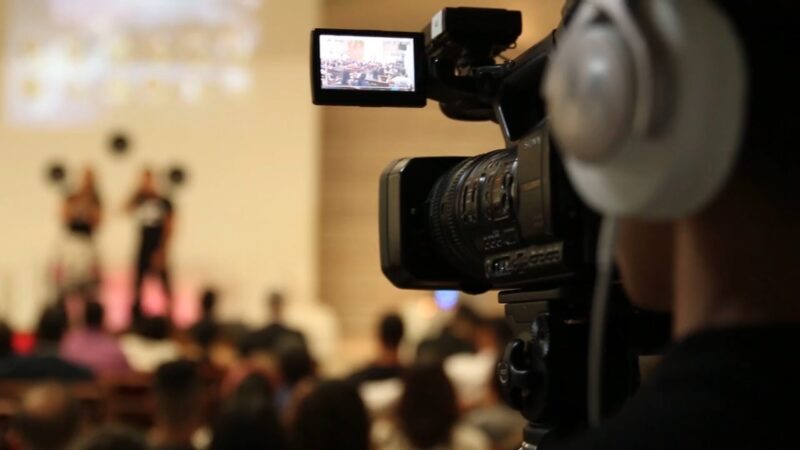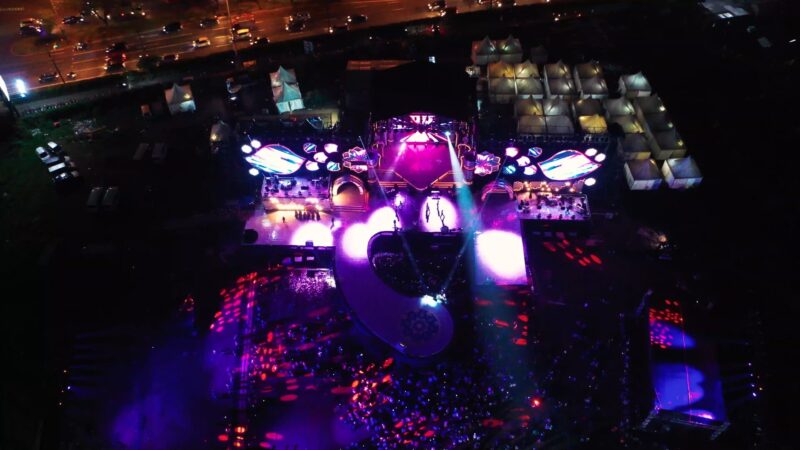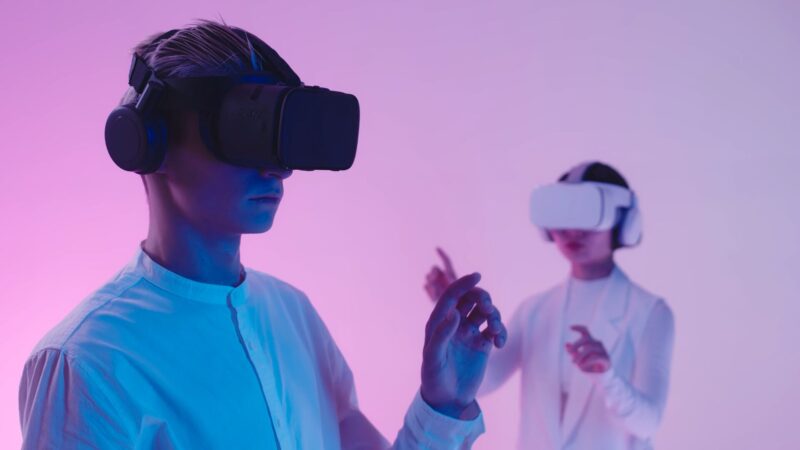What is “Parasocial interaction”?
Hello everyone. This time’s theme is “Parasocial Interaction”.
This refers to the phenomenon in which viewers feel a sense of intimacy and trust with the people and characters that exist through the screen, as if they were in a real interpersonal relationship.
I will explain how the TV programs and videos on YouTube channels that you casually watch go beyond simply providing information and become deeply engraved in your mind.
First, I will review the background and definition of this concept, and then delve into it from various perspectives, including the psychological mechanisms derived from it, its evolution in the digital media era, and how it can be applied to marketing activities.
Please watch till the end.
Definition of Parasocial Interaction

Parasocial interaction refers to a psychological phenomenon in which viewers, in the process of receiving media content one-sidedly, are under the illusion that two-way communication is occurring, and they develop a sense of closeness and trust in the characters and distributors, similar to friendship.
By nature, viewers are in a passive position, only receiving information from the other side of the screen.
However, the directing of the audience and the sharing of personal anecdotes creates a false sense that only they are being talked to, and a strong bond is formed within the audience.
This phenomenon has been noted since the early stages of television research, and research has focused on the viewing experience where newscasters and drama characters feel like family or friends.
Historical Background and Evolution

Research on parasocial interaction dates back to the mid-20th century, when television became popular.
At that time, television entered people’s homes for the first time, and the casters and actors on the other side of the screen became part of their daily lives, and viewers began to feel their presence close to them without even realizing it.
Although it was an extension of the one-way media from the radio era, television, which combined video and audio, had a much greater influence, allowing viewers to obtain a more realistic sense of dialogue through the facial expressions of the personalities and the intonation of their voices.
Later, with the advent of cable television, satellite broadcasting, and the Internet, parasocial interactions expanded not only to television content but also to on-demand video and SNS, and research rapidly evolved.
Detailed Mechanisms

The mechanism by which this phenomenon occurs is supported by a combination of various factors that create “pseudo face-to-face communication” between viewers and media figures.
First of all, nonverbal information, such as facial expressions, gestures, and tone of voice, plays an important role.
Humans derive most of their communication from these methods, and the directing of their eyes toward the camera and the natural movement of their body language strengthen the feeling that someone is talking to them right in front of them.
Second, sharing personal anecdotes and mentioning viewers by name gives them a sense of special treatment.
Third, continuous content that has a story-like feel creates a kind of emotional investment as you relive the characters’ struggles and growth together.
By combining these elements in a multi-layered manner, the viewer begins to feel attached to the person as if they were a ”true friend.”
Psychological Impacts and Viewer Changes

What kind of psychological changes will viewers experience after experiencing parasocial interaction?
First, there is the promotion of self-disclosure. Viewers will be more likely to post their thoughts and sympathies with someone they feel a strong affinity for in the comments section, and as a result, self-disclosure within the community will become more active.
Next is the possibility of behavioral change. For example, there are many reported cases in which people take specific actions, such as wanting to try a product or lifestyle recommended by a person in the media.
Furthermore, over the long term, “loyalty” will develop, and viewers will continue to follow broadcasters and channels and look forward to updates.
In this way, it has become clear that pseudo-friendships have an impact on viewers’ behavior and values.
Evolution in the Digital Media Era

With the spread of the Internet and smartphones, parasocial interaction has reached a further stage of evolution.
Live streaming, where comments and chats are reflected in real time, gives viewers a sense of “participation” and creates an environment that is close to two-way communication.
Furthermore, the story feature and short videos allow viewers to easily share everyday moments and behind-the-scenes footage, giving viewers a special feeling as if they were invited into a private space.
Additionally, as personalized distribution advances using AI and big data, recommendations optimized for each viewer will be delivered, increasing opportunities for contact with content.
These factors interact to make parasocial interactions stronger than ever before.
Production Techniques in Content Creation

In order to intentionally create parasocial interactions in these environments, various staging techniques are utilized.
Even when it comes to changing camera angles, we fine-tune the height of the lens and the placement of people so that the viewer feels natural eye contact.
Directly addressing the audience through narration or monologue is also effective.
Additionally, by selecting background music and sound effects, you can create an emotional scenario and induce empathy from your audience.
As for interactive elements, we sometimes insert quizzes and surveys and design mechanisms that allow viewers to actively participate.
This provides an active experience that goes beyond mere viewing and further strengthens the pseudo-relationship.
Concrete Ideas for Marketing Applications

When leveraging parasocial interactions in your marketing efforts, you need to think of the content itself not as a vehicle to convey your brand message, but as a story that resonates with your audience.
For example, instead of introducing a product with a ”list of specs,” the streamer talks about how they came across the product, the impressions they had while using it, and even stories of failures, making the viewer feel as if they are hearing the honest opinion of a friend sitting next to them.
Additionally, by responding to real-time questions from viewers during live streaming, you can immediately eliminate concerns before making a purchase and increase their willingness to purchase on the spot.
Furthermore, by providing exclusive content for closed communities and fan clubs, and providing a place for viewers to interact with each other, a brand community is formed and contributes to improving brand value.
Strategies for Building Brand Communities

In order to build a brand community based on parasocial interactions, it is essential to have a system that respects the voices of viewers.
By proactively incorporating opinions and ideas from viewers into content creation and visualizing this process within the content, viewers feel like they are part of the brand.
This “co-creation” experience strengthens the bonds of the community, creating a virtuous cycle in which information sharing and word of mouth among members become active.
Additionally, you can increase engagement by holding regular offline events and online meetups to transform virtual relationships into real connections.
Measuring Effectiveness and Setting Metrics

In order to quantitatively evaluate the results of parasocial interactions, it is necessary to set new indicators that indicate viewer engagement and community contribution, in addition to the traditional number of views and likes.
By incorporating metrics that visualize how actively engaged viewers are, such as the amount and quality of conversations in comment sections, the frequency of hashtag use, and the rate of participation in exclusive content, you can understand the intrinsic value of your content.
It is also important to track changes in viewer behavior, such as product page visit rates, coupon usage rates, repeat purchase rates, etc., and analyze how parasocial interactions contribute to actual business results.
Ethical Considerations and Challenges

When utilizing parasocial interaction, ethical considerations are required to avoid creating excessive dependence or misunderstandings while strongly appealing to the viewer’s psychology.
If viewers have too much of an illusion that they are “true friends,” they run the risk of having too high expectations for the streamer or brand and being deeply disappointed when the relationship breaks down.
Additionally, when targeting minors or the mentally vulnerable, it is essential to set appropriate guidelines and ensure transparency in self-disclosure.
Content must be carefully designed to avoid misleading viewers by clearly indicating the intent of the performance and the presence or absence of sponsorship.
Future Outlook and Emerging Opportunities

In the future, parasocial interactions are expected to evolve further with the rise of the Metaverse, VR (virtual reality), and even virtual characters created by AI.
360-degree video and immersive content will increasingly give viewers the feeling of being “there”, enabling deeper immersive experiences than ever before.
With personalized interactions generated by AI, viewers may be able to enjoy new experiences like communicating with their own virtual friends.
These technological innovations have the potential to create new value in a wide variety of fields, including entertainment, education, and healthcare.
Conclusion

Today, I have extensively explained the concept of parasocial interaction, its historical background, psychological mechanisms, evolution in the digital media era, and even how to apply it to marketing.
The pseudo-bonds that viewers and media personalities form go beyond the simple viewing experience and have a huge impact on brand strategy and business results.
Please use the ideas and perspectives introduced today as a reference for your own content production and communication strategies.
See you again in the next video. thank you very much!
This article uses material from the Wikipedia article “Parasocial interaction” which is released under the Creative Commons Attribution-Share-Alike License 4.0.


